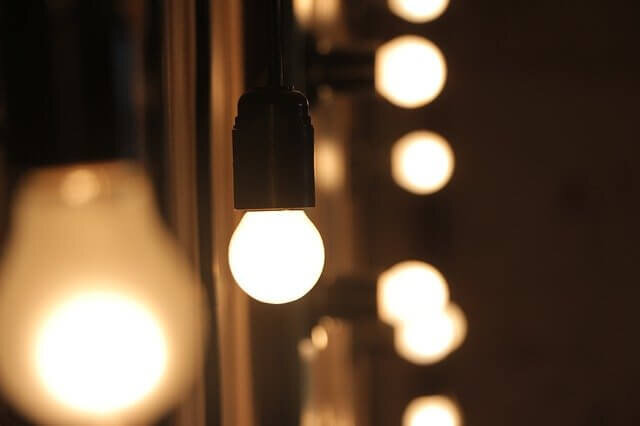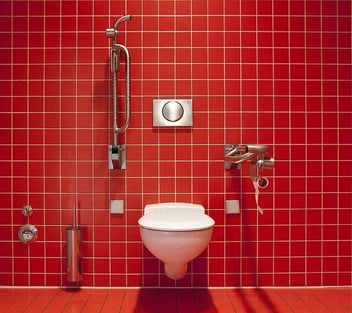By Ashley Zimmermann, Creative Content Director for @designREMODEL
In this era of climate change, we must all do our part to contribute to healing our planet. We are all global citizens, so we have a responsibility to act as such. This article is intended to help educate about sustainable options for remodeling. We have a lot of ground to cover! In Part 1 of this series, we will focus on LED lighting and sustainable sourcing.
.jpg)
Image by Pexels from Pixabay
LED Lighting
Updating the lighting in your home is a simple, yet efficient, way to contribute to energy-saving; plus, it saves you money. The difference boils down to CFLs (compact fluorescent) and incandescent lighting versus LEDs (light-emitting diode). Like traditional incandescent bulbs, LEDs can be used inside and outside, around your house, appliances, garage, etc.
So much research is now available about LED lighting, the choice is very clear. There are two main reasons why you should invest in LED lighting for your home:
LED saves you time and money
LED is better for the environment
Energy.gov tells us, “While LEDs are more expensive, they still save money because they last a long time and have very low energy use.” And by “more expensive,” we’re talking a few dollars more per bulb. For a breakdown of dollar savings for a single bulb, see this quote from The Simple Dollar:
“Over a 23-year period, it will cost you over $200 (and many trips to the hardware store) to keep one 60-watt lamp lit with incandescent bulbs. By comparison, it would cost just $48 using a handful of CFLs, or $38 using a single LED light bulb — a savings of more than $150 either way.”
We all love a good money-saver, but the core benefit of LEDs is their environmental benefits. The energy savings percentage falls somewhere around 80%. IKEA says their LEDs use only 15% of the energy used by regular incandescent bulbs- that is 85% less! Energy.gov says, “ENERGY STAR-qualified LEDs use only 20%–25% of the energy and last 15 to 25 times longer than the traditional incandescent bulbs they replace. LEDs use 25%–30% of the energy and last 8 to 25 times longer than halogen incandescents.”
The main benefit of LEDs is their contribution toward reducing our carbon footprint- a.k.a waste. Bulbs.com’s YouTube video really puts things into perspective: they say, “If every household in the US switched one bulb to an LED it would be the equivalent of [the following]”:
Taking 800,000 cars off the road
Planting 400,000,000 trees
The saved energy could light up 3,000,000 homes for a year
No small potatoes, huh? In case you’re not convinced yet, check out “10 Reasons Why LED Lights Are Good for the Environment” by South African forum Environment.co.za.
.jpg)
Image by Free-Photos from Pixabay
Sustainable Sourcing
Another standard we can commit to is incorporating sustainably sourced materials into our home remodeling projects. Thankfully, changing attitudes and awareness are growing so this is easier than ever.
Let’s start out by talking wood. Reclaimed wood is very trendy, and it is a responsible choice. House Beautiful says it is easier to find reclaimed wood than you would think, at places like Home Depot, Etsy, eBay, reclaimed lumber dealers, Craigslist, and local demolition sites. Think creatively. You can design and incorporate reclaimed wood into just about any aspect of your remodel project; Better Homes & Gardens suggests projects like ceilings and beams, statement tables, doors, flooring, headboards, shelving - you name it.
Beyond wood, there exist many environmentally friendly materials you can use in your remodel or DIY projects. Barbulianno suggests the following options: recycled steel, recycled plastic, sheep’s wool, cork, bamboo, clay brick; as well as hybrid materials like AshCrete, Enviroboard, Newspaperwood, and Hempcrete. Some of these may seem far out but keep an open mind.
As a small aside- several years ago I spent a week with Detroit-based Cass Community Social Services collecting abandoned tires for their Cass Green Industries (CGI) project. CGI’s mission is to employ individuals with barriers to employment entry such as those who are homeless or are recovering from addiction. One of their specialty products is woven mud mats made out of these tires. Not your typical remodeling story, but I hope this serves as a good example. That week significantly impacted my life. Even small things make a difference.
The maxim is true- if each of us contributes a small effort, we can make a significant difference together. Try to stay mindful during your remodeling projects, big and small.
Resources:
https://www.energy.gov/eere/articles/study-environmental-benefits-leds-greater-cfls - Study: Environmental Benefits of LEDs Greater Than CFLs
https://www.energy.gov/energysaver/lighting-choices-save-you-money - Lighting Choices to Save You Money
https://www.thesimpledollar.com/save-money/the-light-bulb-showdown-leds-vs-cfls-vs-incandescent-bulbs-whats-the-best-deal-now-and-in-the-future - Light Bulb Showdown: LED vs. CFL vs. Incandescent
https://www.youtube.com/watch?v=9iUfCHzDUzY&t=80s - Benefits of LED Lighting // Bulbs.com
https://www.environment.co.za/
https://www.environment.co.za/eco-green-living/10-reasons-led-lights-good-environment.html -
https://www.terramai.com/blog/reclaimed-wood-story/ - Beyond Design Trends: How Reclaimed Wood Went Mainstream
https://www.housebeautiful.com/shopping/a26080016/reclaimed-wood-best-places-to-buy/ - 7 Places to Find and Buy Reclaimed Wood for Your Next DIY Project
https://www.bhg.com/home-improvement/remodeling/architectural-details/20-brilliant-uses-for-reclaimed-wood-281474979462884/ - 20 Brilliant Uses for Reclaimed Wood
https://beltmag.com/abandoned-tires-prove-both-blight-and-boon-for-the-motor-city/ - Abandoned Tires Prove Both Blight And Boon For The Motor City
https://casscommunity.org/

.png?width=350&height=350&name=@designremodel%20home%20remodeling%20cost%20guide%20on%20cape%20cod%20(1).png)


-Sep-04-2024-06-32-29-9235-PM.jpg?width=352&name=shutters-g1a79c402d_640%20(2)-Sep-04-2024-06-32-29-9235-PM.jpg)